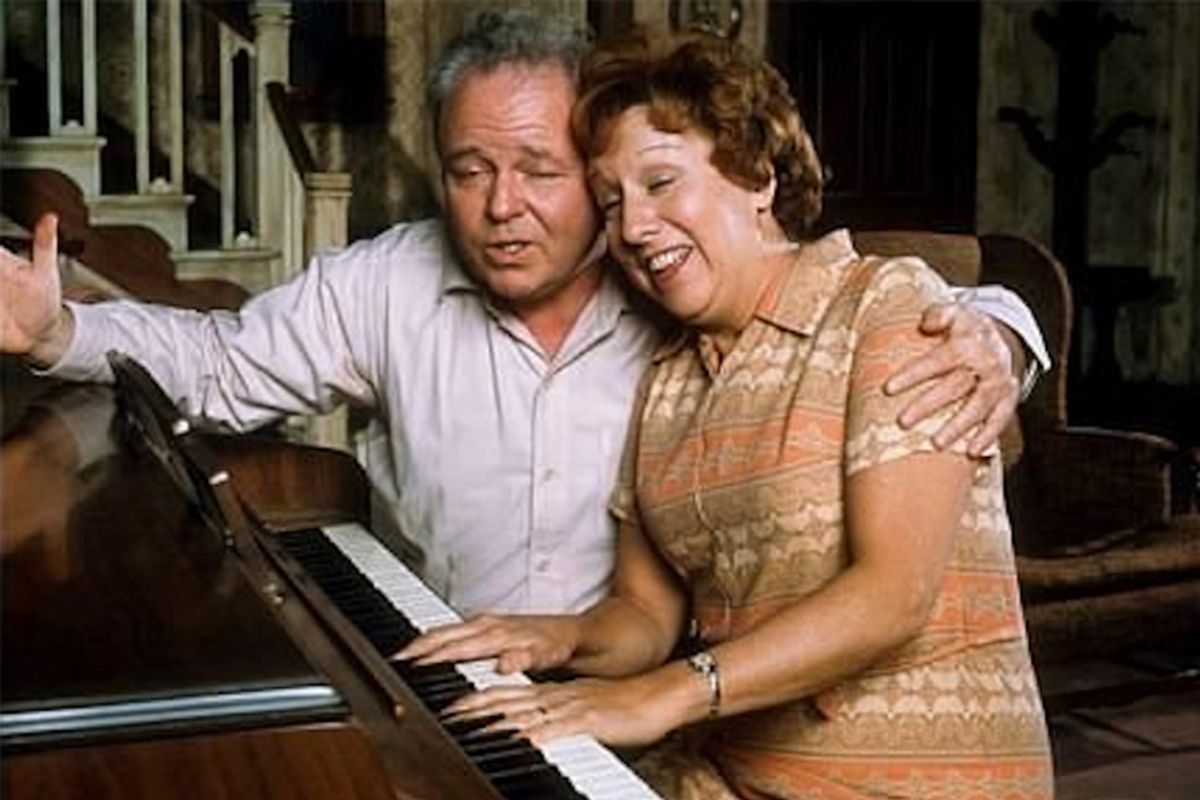
Why ‘All in the Family’ Was a Radical Move for Early 1970s Television
Before “All in the Family” debuted, there was a profound gap between real life and what was being depicted on TV series.
In his autobiography “Even This I Get to Experience,” Norman Lear wrote, “Until ‘All in the Family’ came along, TV comedy was telling us there was no hunger in America, we had no racial discrimination, there was no unemployment or inflation, no war, no drugs, and the citizenry was happy with whomever happened to be in the White House.”

When Lear and Bud Yorkin pitched “All in the Family” to CBS, that network’s executives were looking for something different — but maybe not THAT different.
A week before the un-publicized sitcom debuted on Jan. 12, 1971, Variety’s Les Brown summed up the first four months of the new season for the three networks. Brown wrote that CBS had a lock on “the rural middle-American viewership” with its “rustic sitcoms,” but had failed in its attempts provide shows with a social conscience. CBS wanted to “de-ruralize and get in step with the times” — to get relevant, Brown wrote.
When “AITF” debuted at 9:30 p.m. on a Tuesday, it followed the lineup of “The Beverly Hillbillies,” “Green Acres” and “Hee Haw.”
The unrest in the country was enormous, leading some to predict a second Civil War. Here’s a brief sampling of the world that was NOT being depicted on TV series.

1968:
Martin Luther King and Robert Kennedy assassinated; police clubbed demonstrators at the Democratic National Convention in Chicago; U.S. troop involvement in Vietnam hit an all-time high of 536,100; Paris protests; U.S.S.R. invaded Czechoslovakia; police officers in Mexico City kill dozens (maybe hundreds) of unarmed students; thousands of Mexican American California students staged a walkout to protest substandard education and racism; Howard U. students protested the school’s curriculum and administration.
1969:
Four concertgoers were killed at Altamont; the Manson family murdered Sharon Tate and Leno LaBianca households; first reports of the My Lai massacre; Native Americans occupied Alcatraz Island, saying they had a right to unclaimed federal territories.
1970:
National Guard shot and killed four students at Kent State; the U.S. invaded Cambodia; a crowd of 1,000 people protesting the Kent State killings were attacked by construction workers in N.Y.’s “Hard Hat Riots”; Vice President Spiro Agnew described protesters as “kooks, misfits and bizarre extremists.
That was the real world. For the 1969-70 TV season, the Top 10 rated TV shows were “Rowan & Martin’s Laugh-In,” “Gunsmoke,” “Bonanza,” “Mayberry RFD,” “Family Affair,” “Here’s Lucy,” “Red Skelton Hour,” “Marcus Welby,” “Walt Disney’s Wonderful World of Color” and “The Doris Day Show.”
NBC’s “Laugh-In” had plenty of topical barbs, but the other shows offered only escapism, as characters dealt with old-school values and storylines.
Network execs may have convinced themselves they wanted relevant shows, but the system of advertiser-driven programs was hardly welcoming to anything “daring.”
